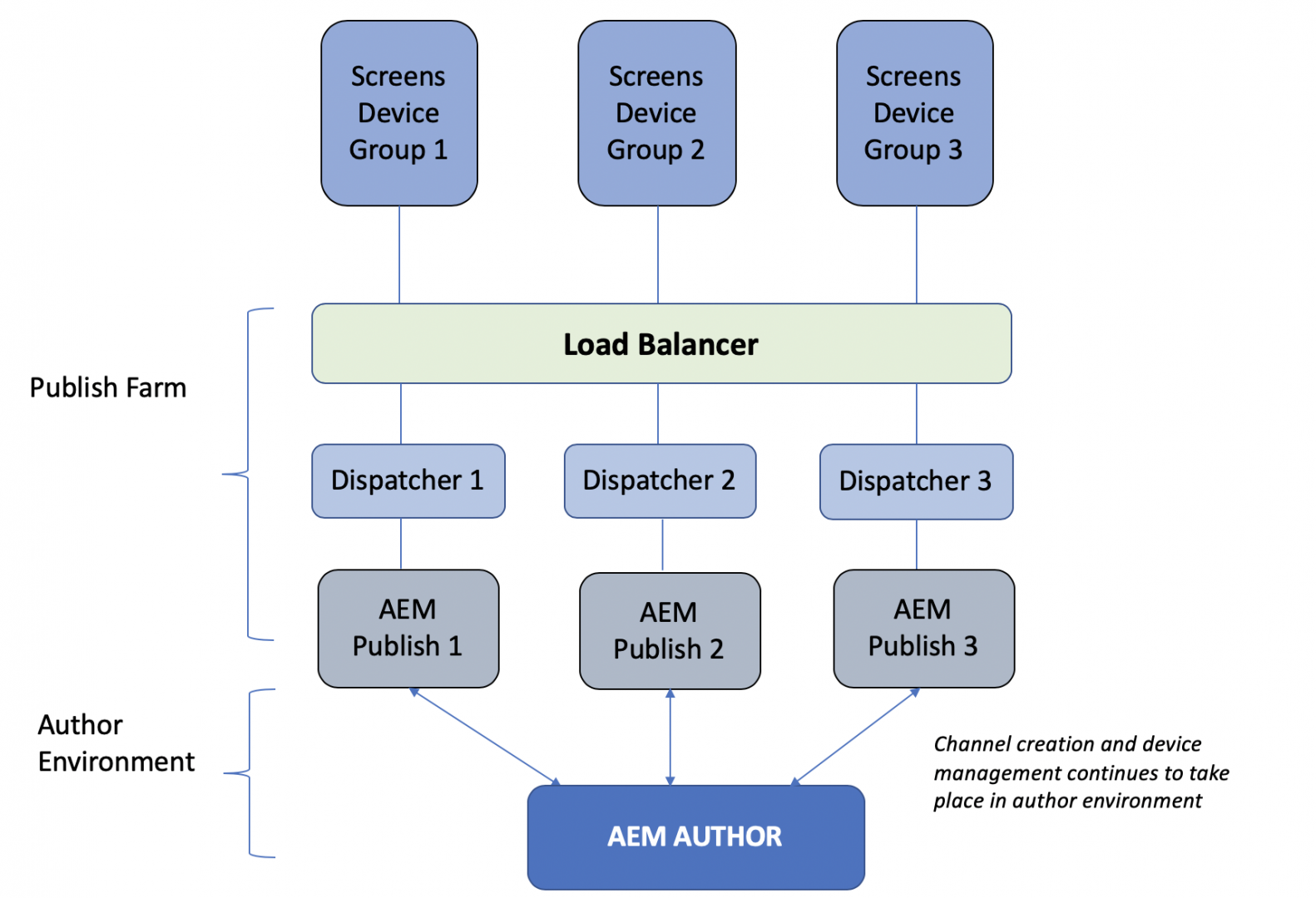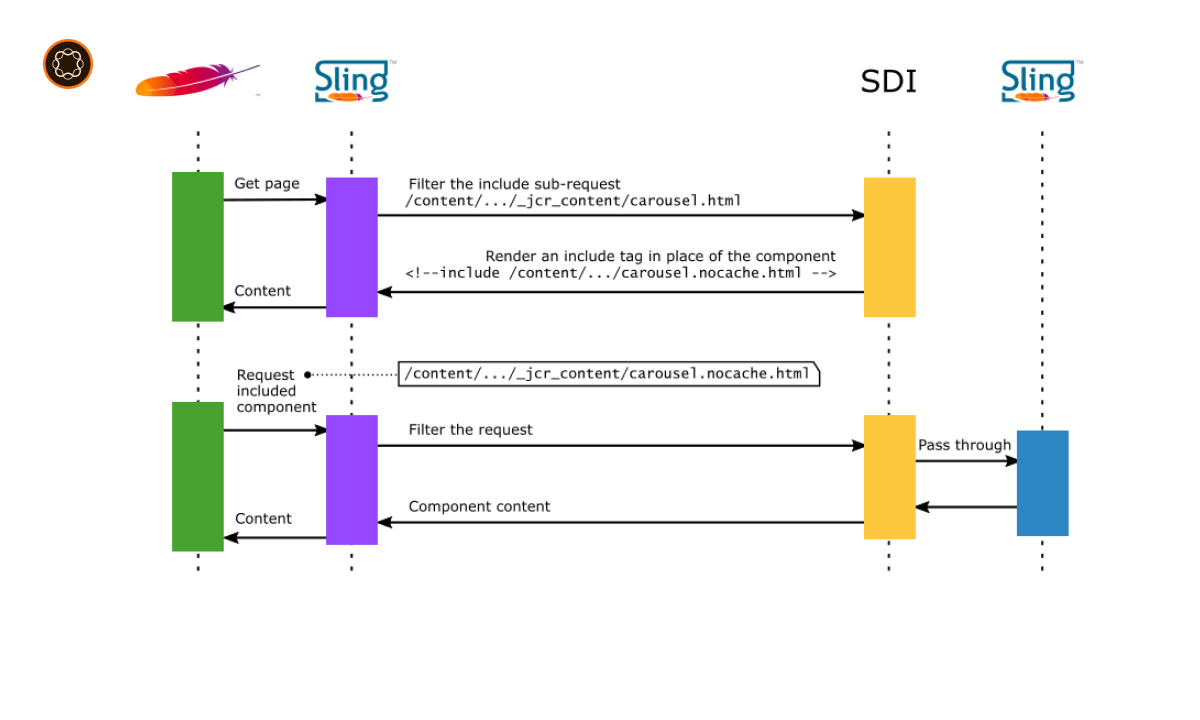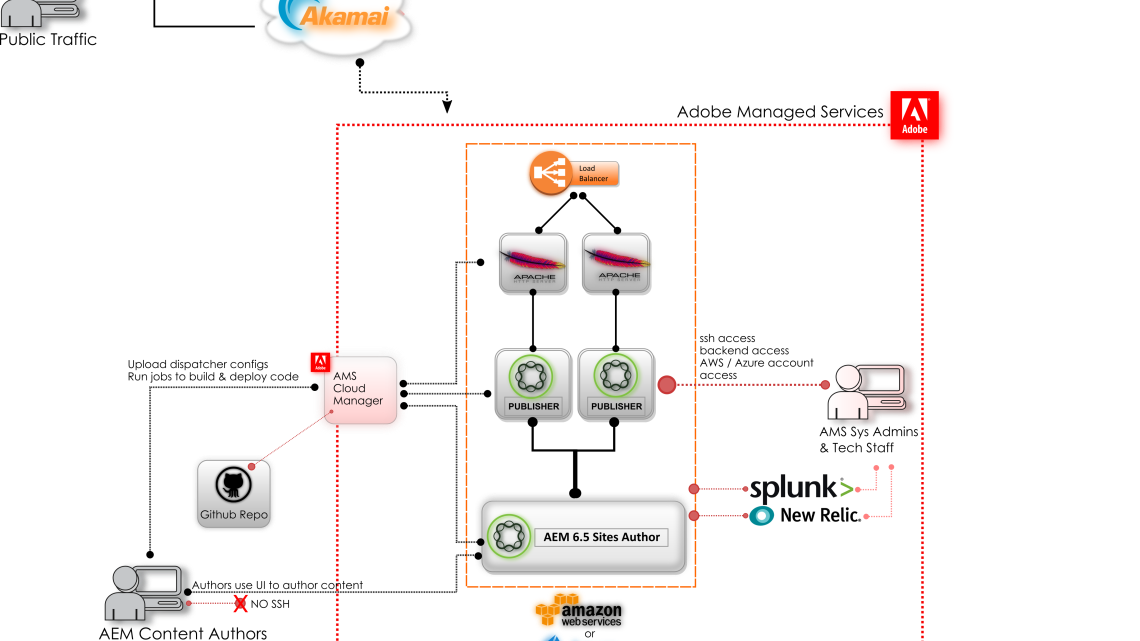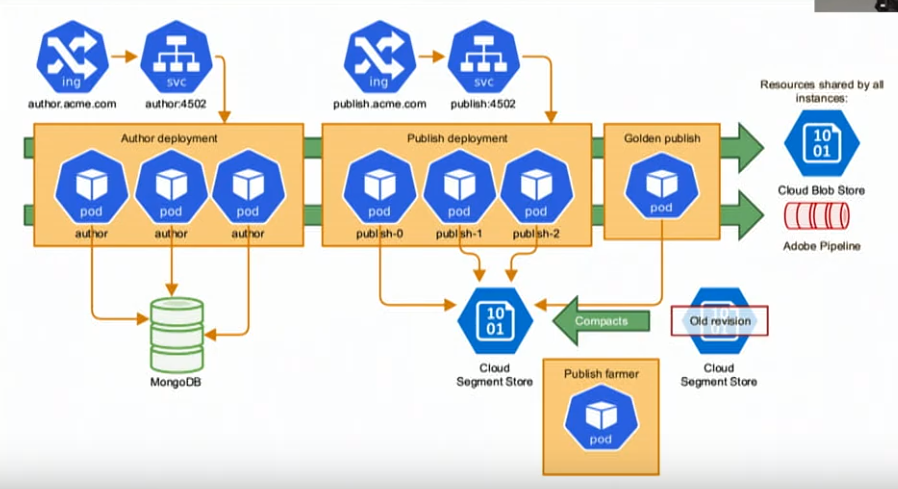Adobe Experience Manager (AEM) is a powerful content management system (CMS) that enables organizations to create, manage, and deliver digital experiences across multiple channels. To fully understand AEM and make the most of its capabilities, it’s essential to have a grasp of its underlying architecture. In this article, we will delve into the various components, deployment models, scalability, integration, security, high availability, extensibility, and the content repository of AEM.
Components of AEM Architecture
AEM’s architecture consists of several key components, each playing a crucial role in the overall system. Let’s explore these components in detail:
Authoring Environment
The authoring environment is the heart of AEM, providing a user-friendly interface for content creation, editing, and management. It allows authors and marketers to create and organize content, manage workflows, and collaborate efficiently.

Dispatcher
The dispatcher is a caching and load balancing component in AEM architecture. It sits in front of AEM instances and serves as a content delivery accelerator. It caches and delivers static or pre-rendered content, reducing the load on the AEM server and improving performance.
Apache Sling
Apache Sling is the underlying web application framework that powers AEM. It is built on top of the Java Content Repository (JCR) and provides a RESTful framework for building web applications. Sling enables developers to leverage AEM’s content-centric architecture, making it easier to create dynamic and personalized experiences.

Adobe Experience Manager Forms
AEM Forms is a module within AEM that enables the creation, management, and deployment of interactive and adaptive forms. It provides tools for designing forms, integrating data, and automating workflows, making it easier to create and manage complex forms and document-based processes.
Deployment Models
Adobe Experience Manager (AEM) provides flexible deployment options to suit different organizational requirements and infrastructures. Let’s explore the various deployment models available in AEM:
On-Premises Deployment
On-premises deployment involves hosting AEM on infrastructure owned and managed by the organization itself. In this model, organizations have full control over the hardware, network, and software configuration. Key aspects of on-premises deployment include:
- Infrastructure Ownership: Organizations are responsible for procuring, maintaining, and upgrading the hardware and network infrastructure required to run AEM.
- Security and Compliance: Organizations can implement their own security measures and compliance standards to protect the infrastructure and meet industry-specific requirements.
- Customization and Integration: On-premises deployment allows for extensive customization and integration with other systems within the organization’s network.

On-premises deployment provides maximum control and customization but requires dedicated IT resources and infrastructure management expertise.
Cloud Deployment
Cloud deployment involves hosting AEM in a cloud infrastructure provided by a third-party cloud service provider, such as Adobe Managed Services or other cloud platforms like Amazon Web Services (AWS), Microsoft Azure, or Google Cloud Platform (GCP). Key aspects of cloud deployment include:
- Scalability and Elasticity: Cloud deployment allows organizations to scale resources up or down based on demand, ensuring optimal performance and cost-efficiency.
- Managed Services: Cloud providers may offer managed services, such as infrastructure management, security updates, and performance monitoring, reducing the burden of infrastructure management on organizations.
- Global Availability: Cloud deployment enables organizations to deploy AEM instances in multiple geographic regions, providing low-latency access to users across the globe.

Cloud deployment offers flexibility, scalability, and reduced infrastructure management overhead, making it an attractive option for organizations looking for agility and cost savings.
Hybrid Deployment
Hybrid deployment combines both on-premises and cloud deployment models, allowing organizations to leverage the benefits of both approaches. In a hybrid deployment, certain components or services of AEM can be hosted on-premises, while others are deployed in the cloud. Key aspects of hybrid deployment include:
- Flexibility: Hybrid deployment provides flexibility in choosing the most suitable deployment model for different components based on factors like security requirements, data sensitivity, or integration needs.
- Integration Challenges: Hybrid deployment introduces integration challenges between on-premises and cloud-based components. Organizations need to establish secure and efficient communication channels between the two environments.
Hybrid deployment enables organizations to leverage the scalability and managed services of the cloud while maintaining control over sensitive data and specific infrastructure components.
Managed Services
In addition to traditional on-premises and cloud deployments, Adobe offers managed services for AEM through Adobe Managed Services (AMS). AMS is a fully managed, cloud-based offering where Adobe handles the infrastructure management, security updates, performance optimization, and other operational aspects of running AEM. Organizations using AMS can focus on content creation and digital experiences while relying on Adobe’s expertise for infrastructure management.
Managed services provide a hassle-free approach to deploying and maintaining AEM, ensuring high availability, scalability, and security without the need for extensive infrastructure management.
Scalability in AEM Architecture
Scalability is crucial to ensure that AEM can handle increased loads and traffic without compromising performance. Here are some key aspects of scalability in AEM:
- Load Balancing: AEM architecture supports load balancing techniques to distribute incoming requests across multiple instances. This improves performance and ensures that the system can handle high traffic efficiently.
- Caching: AEM utilizes various caching mechanisms, such as dispatcher caching and content caching, to reduce the load on the server and enhance response times. Caching also helps in delivering static content quickly.
- Horizontal Scaling: AEM architecture supports horizontal scaling, where additional AEM instances can be added to handle increased workloads. This allows organizations to scale their infrastructure as per demand and ensure optimal performance.
- Content Delivery Networks (CDNs): CDNs can be integrated with AEM architecture to deliver content efficiently to users across the globe. CDNs cache content in multiple locations, reducing latency and improving the overall user experience.
Integration Capabilities
AEM is designed to seamlessly integrate with other systems and tools to create a unified digital experience. Here are some key integration capabilities of AEM:
- APIs and Connectors: AEM provides a wide range of APIs and connectors, allowing integration with external systems, third-party applications, and marketing tools. This enables organizations to leverage existing investments and streamline data flow.
- Marketing Automation: AEM integrates with marketing automation platforms, enabling marketers to automate and personalize digital experiences based on customer data and behavior. This integration enhances targeting, segmentation, and campaign management capabilities.
- E-commerce Integration: AEM can be integrated with e-commerce platforms to provide a seamless online shopping experience. Integration with e-commerce systems enables product catalogs, inventory management, and secure transactions.
Security in AEM Architecture
Ensuring the security of data and content is a critical aspect of any CMS, and AEM provides robust security features to protect sensitive information. Let’s delve into the key security measures and considerations in AEM architecture:
User Authentication and Authorization
AEM supports various authentication mechanisms to verify the identity of users accessing the system. These mechanisms include:
- Local User Management: AEM has its own built-in user management system, allowing administrators to create and manage user accounts directly within AEM.
- LDAP Integration: AEM can integrate with external Lightweight Directory Access Protocol (LDAP) servers, such as Microsoft Active Directory, for centralized user authentication and authorization.
- Single Sign-On (SSO): AEM supports SSO protocols like SAML and OAuth, enabling users to log in to AEM using their existing enterprise credentials.
Once users are authenticated, AEM provides granular access controls and role-based permissions to define what actions and content each user or group can access. This ensures that only authorized users can perform specific operations and access sensitive content within AEM.
Encryption and Secure Communication
AEM prioritizes data security by supporting encryption for data at rest and in transit:
- Data at Rest: AEM allows encryption of content stored in its underlying content repository. This safeguards sensitive data from unauthorized access, even if the physical storage media is compromised.
- Data in Transit: AEM uses secure communication protocols, such as HTTPS (HTTP over SSL/TLS), to establish encrypted connections between clients and AEM instances. This protects data from interception and tampering during transmission.
Implementing encryption and secure communication protocols ensures that sensitive information remains confidential and integral throughout the data lifecycle within AEM.
Vulnerability Management
To maintain a secure environment, AEM follows a proactive approach to address potential vulnerabilities. This includes:
- Security Patches and Updates: Adobe regularly releases security patches and updates to address any identified vulnerabilities in AEM. It is crucial to keep the AEM instance up to date with the latest patches to protect against potential security threats.
- Security Audits and Penetration Testing: Organizations can conduct periodic security audits and penetration tests to identify and address vulnerabilities specific to their AEM implementation. These measures help ensure that security controls are in place and functioning effectively.
- Secure Coding Practices: AEM developers should follow secure coding practices, such as input validation, output encoding, and protection against common web vulnerabilities like cross-site scripting (XSS) and SQL injection. Adhering to secure coding practices minimizes the risk of introducing security vulnerabilities during development.
By actively managing vulnerabilities and staying up to date with security patches, organizations can significantly reduce the risk of security breaches and protect their AEM instances from potential threats.
Content-Level Security
AEM provides fine-grained control over content access and permissions. Administrators can define access restrictions at the content level, ensuring that only authorized users or groups can view, edit, or publish specific content. Content-level security features include:
- Access Control Lists (ACLs): ACLs allow administrators to specify who can perform specific operations (read, write, delete) on individual content nodes or sets of nodes within AEM.
- Workflow Security: AEM’s workflow engine includes security features that allow administrators to define who can start, participate in, or approve specific workflows. This ensures that sensitive workflows, such as content publication, are performed by authorized individuals.
By implementing content-level security measures, organizations can maintain strict control over access to sensitive information and prevent unauthorized modifications or disclosures.
Auditing and Logging
AEM provides extensive auditing and logging capabilities, allowing organizations to track and monitor user activities, system events, and content changes. Key aspects of auditing and logging in AEM include:
- Audit Logs: AEM generates audit logs that capture user actions, login attempts, content modifications, and system events. These logs help in detecting and investigating security incidents, as well as meeting compliance requirements.
- Error and Debug Logs: AEM records error and debug logs, providing valuable information for troubleshooting and identifying potential security-related issues.
Proactive monitoring and analysis of audit and log data can help organizations detect suspicious activities, identify security gaps, and respond promptly to any security incidents.
High Availability and Fault Tolerance
To ensure uninterrupted access to content and applications, AEM architecture incorporates high availability and fault tolerance mechanisms. Here’s how AEM achieves high availability:
- Redundancy: AEM can be configured with redundancy at various levels, including hardware, network, and data storage. Redundancy minimizes the risk of single points of failure, ensuring continuous availability of content and services.
- Failover Mechanisms: AEM architecture supports failover mechanisms, where standby instances automatically take over in case of a primary instance failure. This ensures seamless continuity of operations and minimizes downtime.
- Disaster Recovery: AEM architecture can be configured with disaster recovery plans to mitigate the impact of catastrophic events. Regular backups, off-site replication, and data recovery strategies are essential components of a robust disaster recovery plan.
Extensibility and Customization Options
AEM architecture provides extensive extensibility and customization options, empowering organizations to tailor the platform to their specific business needs. Let’s explore the key aspects and capabilities of extensibility in AEM:
Custom Development
AEM offers a robust development framework that allows developers to create custom components, workflows, and integrations. Here are some key elements of custom development in AEM:
- Component Development: AEM enables the creation of custom components using various technologies like Java, HTML, CSS, and JavaScript. Custom components can be designed to meet specific design requirements or integrate with external systems.
- Workflow Development: AEM’s workflow engine allows developers to create custom workflows tailored to specific business processes. Custom workflows automate content approval, publishing, and other complex processes, streamlining content management workflows.
- Integration Development: AEM provides APIs and frameworks to facilitate integration with external systems. Developers can build custom integrations with enterprise applications, marketing tools, e-commerce platforms, or any other system that complements the digital experience.
Custom development in AEM opens up a world of possibilities to extend its functionality, create unique experiences, and integrate seamlessly with other systems.
Plug-ins and Extensions
AEM supports plug-ins and extensions that enhance its capabilities and provide ready-made solutions to common requirements. These plug-ins and extensions can be developed by Adobe or third-party vendors. Here are some examples:
- Adobe Solution Partner Integrations: Adobe partners develop integrations and extensions that extend AEM’s capabilities. These integrations can enhance functionalities like analytics, personalization, e-commerce, and digital asset management, among others.
- Community-developed Extensions: AEM has a vibrant developer community that contributes to the ecosystem by developing and sharing extensions and add-ons. These extensions can provide additional features, widgets, or tools that complement AEM’s core functionalities.
Leveraging plug-ins and extensions allows organizations to extend AEM’s capabilities without reinventing the wheel, saving time and effort in custom development.
AEM Core Components
AEM provides a set of pre-built, reusable components known as AEM Core Components. These components cover common use cases and can be customized to align with specific design requirements. Key features of AEM Core Components include:
- Modularity: AEM Core Components are designed to be modular, enabling developers to easily assemble and configure components to build engaging experiences.
- Responsive Design: Core Components are built with responsive design principles in mind, ensuring optimal display and functionality across various devices and screen sizes.
- Accessibility: AEM Core Components follow accessibility best practices, making it easier to create accessible content and comply with accessibility standards.
Using AEM Core Components accelerates development and provides a consistent user experience while allowing customization to match specific branding and design guidelines.

OSGi Framework
AEM is built on the OSGi (Open Services Gateway Initiative) framework, which offers a dynamic module system for Java applications. The OSGi framework provides the following benefits for extensibility:
- Modularity: The OSGi framework enables developers to create modular, decoupled bundles of functionality. This allows for the addition, removal, and update of modules without affecting the overall system.
- Service-based Architecture: OSGi follows a service-oriented architecture (SOA), where components can expose services and consume services provided by other components. This promotes loose coupling and enhances the extensibility of AEM.
Developers can leverage the OSGi framework to create custom bundles, services, and extensions that seamlessly integrate with AEM and extend its capabilities.
In conclusion, AEM architecture offers rich extensibility and customization options. Through custom development, plug-ins and extensions, AEM Core Components, and the OSGi framework, organizations can tailor AEM to their specific requirements, integrate with external systems, and create unique digital experiences. This extensibility empowers organizations to leverage the full potential of AEM and adapt it to their evolving business needs.
The Role of Content Repository
At the core of AEM architecture lies the content repository, which serves as the storage system for all content and assets. The content repository plays a crucial role in organizing, managing, and delivering content efficiently. Let’s explore the key aspects of the content repository in AEM:
Hierarchical Structure
AEM’s content repository follows a hierarchical structure, organizing content in a tree-like fashion. This structure allows for easy navigation, content reuse, and efficient searching. The hierarchical organization facilitates the creation of parent-child relationships between content nodes, enabling the inheritance of properties, permissions, and other attributes.
Versioning and Workflow
The content repository in AEM supports versioning and workflow management, which are essential for collaborative content authoring and review processes. AEM’s versioning capabilities enable authors to create and manage different versions of content, making it easy to track changes, revert to previous versions, and compare revisions. Workflow management features allow authors to define approval processes, assign tasks, and automate content publishing workflows, ensuring a smooth and controlled content lifecycle.
Metadata and Taxonomy
AEM’s content repository supports the association of metadata and taxonomy with content assets. Metadata provides descriptive information about content, such as keywords, tags, categories, and custom attributes. This metadata enhances search capabilities, enables content personalization, and facilitates content targeting based on user preferences. Taxonomy, on the other hand, allows the classification and categorization of content assets, making it easier to organize and retrieve relevant information.
Content Replication and Distribution
AEM’s content repository facilitates content replication and distribution across various environments and delivery channels. Replication allows content to be efficiently synchronized between authoring and publishing instances, ensuring consistency and reducing latency. AEM’s content distribution capabilities enable the delivery of content to multiple channels, including websites, mobile applications, social media platforms, and other digital touchpoints. This enables organizations to provide a consistent and engaging digital experience to their audiences.
Scalability and Performance
AEM’s content repository is designed for scalability and high performance. It can handle large volumes of content and assets, supporting enterprise-level deployments with millions of assets and concurrent user access. AEM utilizes various techniques like caching, indexing, and efficient data storage mechanisms to optimize performance and ensure fast retrieval of content.
The content repository forms the backbone of AEM, providing a robust foundation for content management, versioning, workflow, metadata association, content distribution, and scalability.
Conclusion
In conclusion, Adobe Experience Manager (AEM) is a powerful content management and digital experience platform with a robust architecture. Understanding the key components and principles of AEM architecture is essential for organizations aiming to leverage its capabilities effectively.
In this article, we explored the various aspects of AEM architecture, including its components, deployment models, scalability, integration capabilities, security measures, high availability mechanisms, extensibility options, and the role of the content repository. AEM’s modular and scalable architecture allows organizations to create, manage, and deliver personalized and engaging digital experiences across multiple channels.
By harnessing the power of AEM architecture, organizations can streamline content authoring and management, integrate with external systems, automate workflows, ensure data security, achieve high availability, customize the platform to their specific needs, and deliver exceptional digital experiences to their audiences.
As technology advances and customer expectations evolve, AEM continues to be a leading solution for organizations seeking to deliver compelling and immersive digital experiences. Understanding its architecture sets the foundation for successful implementation and unlocks the full potential of Adobe Experience Manager.

I’m Kirill Efimov, an experienced AEM developer with over 10 years of experience in Java and web development. I’m skilled in developing AEM components, templates, workflows, and integrations with other systems, and I’m passionate about delivering high-quality solutions to my clients.
I also believe in knowledge-sharing and staying up-to-date with the latest developments in the industry. Through blog posts, tutorials, and speaking engagements, I’m committed to contributing to the AEM community and helping others overcome the challenges they may face in their AEM projects.